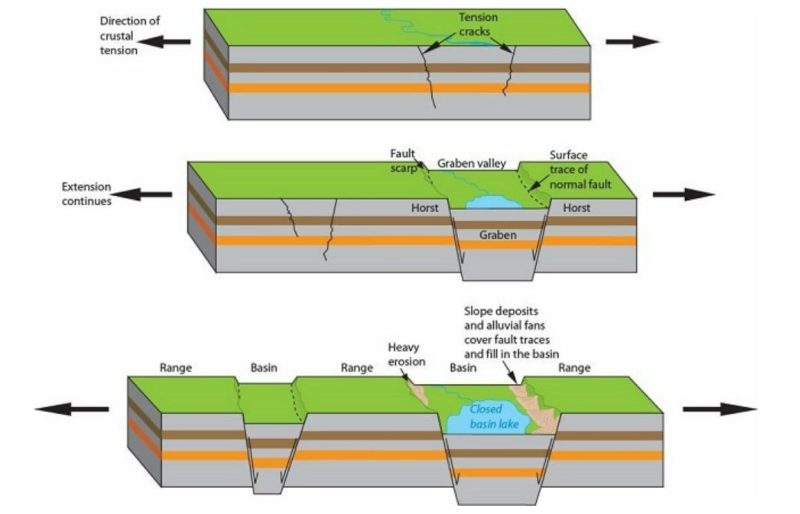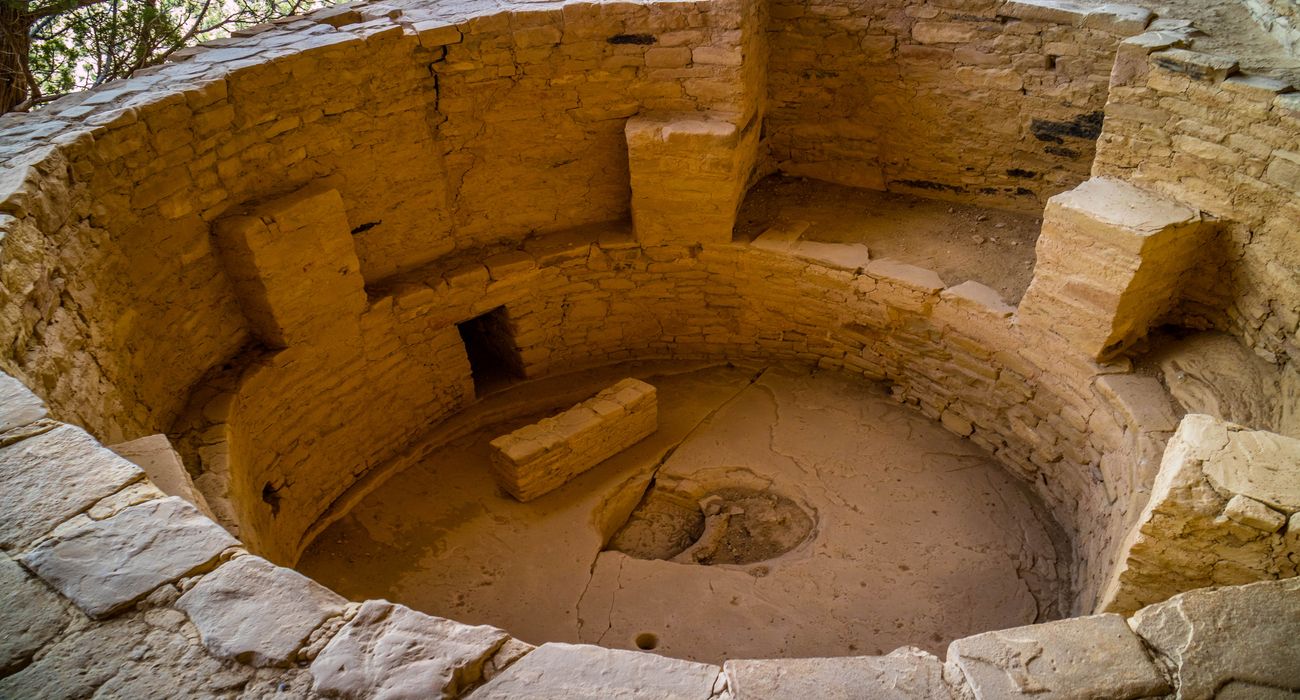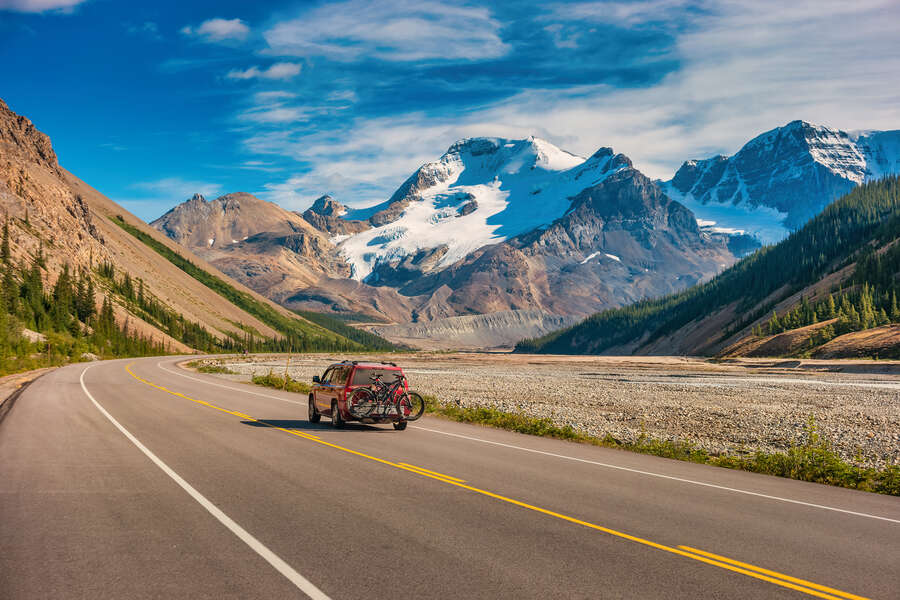A Tour of The 9 Oldest Mountain Ranges on Earth


As a little refresher from 2nd grade, mountains generally form in three different ways, all involving plate tectonics. So before we scroll and look at the pretty pictures of the mountains, I am going to do a quick little crash course on how these beautiful creations that we love form.
Fold Mountain: Two tectonic plates collide, and the less dense crust is forced to float on top of the denser mantle rocks. The upper crust shapes the mountain, while the bottom crust is forced downward into the mantle. An example of this mountain formation would be the Appalachian Mountains in the Eastern United States.

Block Mountains: Faults in the crust create a seam where rocks can move past each other in a process called rifting. The uplifted rocks on one side of the fault rise relative to the other side and form block mountains. The Sierra Nevada Mountain Range in the Western United States is an example of a block mountain range. In the diagram below, “horst” is a term for range, and “graben” is a term for valley.

Volcanic Mountains: Typically the youngest of the three mountains, they form when magma beneath the Earth’s crust is forced to the surface where it hardens. Mt. Bachelor is considered a dormant stratovolcano, which is constructed of many layers of hardened lava.

Now to the part where we travel the world in search of the oldest mountain ranges. Before we start the list, I will say it’s difficult to accurately estimate the age of mountain ranges when some are dated billions of years back. But, without further ado.
#9: Laurentian Mountains; estimated age of 0.54 – 1 billion years.
- Québec, Canada
- Highest Peak: 3,855 feet
- Average Elevation: 2,000 – 3,000 feet
- Area: 70,541 square miles
In these ancient mountains, you can find one of the earliest ski areas, Sommet Saint-Sauveur. Saint-Sauveur was the very first ski venture of Fred Pabst, the Milwaukee beer legend, who would eventually build North America’s first ski-area conglomerate in the 1930s.

#8: Blue Ridge Mountains; estimated age of 1.5 billion years.
- Eastern United States, running from Georgia to Pennsylvania
- Highest Peak: 6,684 feet
- Average Elevation: 2,000 – 4,000 feet
- Area: 550 miles long and 65 miles wide
We all have heard it, “Take Me Home, Country Roads” by John Denver is engraved in our minds. And now the lyrics “Younger than the mountains, growin’ like a breeze” has a little truth to them, just about everything is younger than the Blue Ridge Mountains. The mountains get their blue haze from a chemical from native trees called isoprene that scatter blue light from the sun.

#7: St. Francois Mountains; estimated age of 1.5 billion years.
- Missouri, USA
- Highest Peak: 1,772 feet
- Average Elevation: 1,136 feet
- Area: 7,030 Acres
There are mountains in Missouri? Apparently so, and they’re really old! So if you want to get out of the city, the mountain range is around an hour South of St. Louis.

#6: Black Hills; estimated age of 1.8 billion years.
- Northwest South Dakota and Wyoming, USA
- Highest Peak: 7,242 feet
- Average Elevation: 4,000 – 7,000 feet
- Area: 8,426 square miles
Yes, Mt. Rushmore is carved into one of the oldest mountain ranges on Earth. Along with being famous for Mt. Rushmore and the Crazy Horse Memorial, the black hills boast 210 miles worth of cave passages. Commonly overlooked, the drive halfway across the country sounds worth it to explore some great hiking, fishing, camping, cave exploring, and more.

#5: Guiana Highlands; estimated age of 2.0 billion years.
- Northeastern South America
- Highest Peak: 9,823 feet
- Average Elevation: 2,600 – 4,900 feet
- Area: 1,200 miles long and 200 – 600 miles wide
Do you remember the movie Up? The giant flat-top mountain where they land the balloon-flown house is called a “tepui” and they are all over the Guiana Highlands. In fact, the flora and fauna on top of the tepuis are more closely related to the flora and fauna off the coast of West Africa, than they are related to the jungle floor below… talk about showing your age.

#4: Magaliesberg; estimated age of 2.4 billion years.
- Northwest Province of South Africa
- Highest Peak: 6,076 feet
- Average Elevation: 1,000 feet
- Area: 1,400 miles
Formed from ancient volcanic eruptions, this range consists of many tall rolling hills and waterfalls. The earliest known name of the mountain range is Dithaba Diloka, a local Setswana name in reference to the abundance of tussock grass that grows in the area.

#3: Waterberg Mountains; estimated age of 2.7 billion years.
- Limpopo Province of South Africa
- Highest Peak: 6,000 feet
- Average Elevation: 2,000 feet
- Area: 5,600 square miles
Rhinos, buffaloes, and other rare animals call the Waterberg Mountains home. The range is also great for outdoor enthusiasts, containing several national parks, hiking trails, and caves to explore.

#2: Hamersley Range; estimated age of 3.4 billion years.
- Pilbara Region in Western Australia
- Highest Peak: 4,098 feet
- Average Elevation: 1,500 – 1,800 feet
- Area: 290 miles in length
The Karijini National Park is located within the Hamersly range and is home to the Banyjima, Kurrama, and Innawonga Aboriginal people. Hamersley Range contains large deposits of iron ore, producing a large portion of Australia’s iron ore exports.

#1: Barberton Greenstone Belt; estimated age of 3.5 billion years.
- South Africa
- Highest Peak: 5,900 feet
- Average Elevation: 3,000 – 5,000 feet
- Area: 2,800 square miles
The Barberton Greenstone Belt of South Africa consists of lava and metasedimentary rocks and was given its name by the greenish hue of the mountains. As far back as the 1880s, prospectors were drawn to the region’s gold deposits. Later examinations revealed fossils of microscopic life forms more than 3 billion years old!

You might also like:







